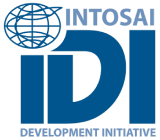
Context matters for SAIs when addressing fraud and corruption
During recent years there’s been an increased discussion on what role SAIs could play in combatting fraud and corruption. INTOSAI acknowledges the role SAIs play through their audits. As mentioned in Institutional Capacities, levels of corruption are closely connected to levels of democracy, with a fall in democracy and a rise in corruption running in parallel. As SAI Audit Impact demonstrated, SAIs can play a role in holding government accountable, during crisis, when the risk of loss of public monies is increased. This chapter presents an analysis of self-reported SAI practices related to fraud and corruption, and the role SAIs could play, also outside emergency situations.
COVID-19 showed that emergency situations put a special strain on public finance management with many of the regular checks and balances being set aside to allow for quick payments for crisis measures or the introduction of emergency laws. A review of audits of emergency funding done by IDI indicates two things.25During the pandemics IDI published a series of case studies presenting audits on emergency funding. See for example Malawi Case Study
IDI did also an internal analysis of COVID audits, but results have not yet been published. Firstly, it shows that audits uncover actions which could be indication of corrupt behaviour, such as undue payments to staff (such as allowances), overpayment to companies selected without due process and lack of proper records of transfers, which could suggest monies are being embezzled. It also demonstrates that crisis exacerbates the existing weaknesses of the public finance management system. Examples from emergency funding audits were weaknesses in budgeting where allocations weren’t accompanied by proper budgets and plans for the use of the funds, lack of internal control which could help avoid breaches in procurement regulations, and inadequate accounting systems, where transfers and payments are not properly registered and accounted for to avoid losses.
In the IMF book Good Governance in Africa from 2022, the role of SAI in curbing fraud and corruption is discussed in a chapter co-authored together with IDI.26Pompe, French, Aldcroft, Fredriksen and Memvuh, Taylor- Pearce, Domelevo, Newiak and Rahim. The Role of Supreme Audit Institutions in Addressing Corruption, Including in Emergency Settings in Monique Newiak, and Fazeer S. Rahim Newiak, Monique, Alex Segura-Ubiergo, and Abdoul Aziz Wane, eds. 2022. Good Governance in Sub-Saharan Africa: Opportunities and Lessons. Washington, DC: International Monetary Fund. This chapter concludes the SAIs have a role in supporting anti-corruption efforts, and that key aspects of this is their ability to prevent and detect corruptive behavior through audits, but equally to cooperate with other institutional actors as well as carrying out own mandate, when it comes to enforcement of detected cases. Finally, it depends on the SAI mandate, but equally, it’s likely that country context and characteristics play a role. In the next sections we will explore the results of the Global Survey for prevention, detection, investigation and sanction. We will assess results based on the insights drawn from the two former works mentioned and finally discuss contextual factors for the role SAI can play.
[25] During the pandemics IDI published a series of case studies presenting audits on emergency funding. See for example Malawi Case Study
IDI did also an internal analysis of COVID audits, but results have not yet been published.
[26] Pompe, French, Aldcroft, Fredriksen and Memvuh, Taylor- Pearce, Domelevo, Newiak and Rahim. The Role of Supreme Audit Institutions in Addressing Corruption, Including in Emergency Settings in Monique Newiak, and Fazeer S. Rahim, Alex Segura-Ubiergo, and Abdoul Aziz Wane, eds. 2022. Good Governance in Sub-Saharan Africa: Opportunities and Lessons. Washington, DC: International Monetary Fund.
Figure 61 – Ways SAIs address Fraud and Corruption

Prevention and detection
The COVID-audits have shown that SAIs have an important role in prevention and detection, and are involved in enforcement, although usually not on their own. Prevention of corruption is enabled through functioning horizontal accountability systems, and SAIs conducting high quality audits with high coverage of their mandate. Regular compliance audits can assess the robustness of procurement and internal control systems, and as such be an effective tool to establish more effective systems for prevention in the public sector.
According to the Global Survey, a staggering 87% of SAIs reports to have conducted an audit on COVID-19 funds. A proportion of these audits are likely to coincide with the audits carried out by SAIs in line with the requirement set in Letters of Intent (LOI) by the International Monetary Fund, which required countries to carry out an independent audit of the use of the emergency loans during the crisis.2788 IMF member countries which received IMF COVID emergency financing, 75 signed letters of Intent carrying commitments on audits. Of this number, 56 member countries committed to audits of the emergency finance to be conducted by the SAI. Source: IMF. 71% reported to have published a report, suggesting that there was a relatively high degree of transparency on the use of these funds, globally, following the pandemics. Since the period of this Global Survey coincided with the COVID-19, it is timely to look at the relationship between some of the practices of SAI, and how they correspond to the different ways SAIs contribute to curbing corruption.
The Global Survey 23 asked SAIs to assess the frequency of observed indications of corruption, observed through their audits. The results are not surprising in themselves with 14% reporting to never uncover indications, the majority, 62%, reporting to sometimes observe this, and another group of 23% reporting to often observe indications of corruption during audits. Further analysis of the results against coverage of compliance audit, testing whether high coverage of compliance audit also leads to increased discovery, suggests the frequency of detection of indications of corruption does not increase with a higher compliance audit coverage. This could either imply that when SAIs are doing compliance audits systematically with high coverage of audited entities, it leads to improved compliance, which reduces possible observations, or it could mean that SAIs despite this, are not doing audits in a way that leads to discoveries which are indicative of corruptive behaviour.
To understand the results better, we may resort to looking at the self-reporting of SAIs for the Executive’s implementation of compliance audit results. Globally 53% of SAIs found recommendations to be mostly implemented. SAIs from countries with lower levels of corruption assessed audit recommendations to be implemented to a higher degree than countries with higher levels of corruption (74% vs 56%). This can be seen from the graph below. These numbers could suggest that there is a relationship between overall levels of corruption in government and its willingness to improve good governance by following through on SAI audit recommendations, where regular audits will have a limited effect on preventing corruption.
[27] 88 IMF member countries which received IMF COVID emergency financing, 75 signed letters of Intent carrying commitments on audits. Of this number, 56 member countries committed to audits of the emergency finance to be conducted by the SAI. Source: IMF.
Figure 62 – Implementation of Audit Recommendations by levels of corruption
Results in the corruption index are inverse, with bottom third indicating lower levels of corruption


Investigation and sanction
The recognition that SAIs come across suspicions of fraud and corruption in their audit work and the increased global focus on combating these evils, have led to an increased interest in SAIs’ ability to combat fraud and corruption through investigation. But while COVID-19 represented an emergency state, where many SAIs received extra impetus from external stakeholders to carry out audit on funds and programmes associated with high risk of loss and mismanagement, SAIs’ mandate and understanding of their role differs widely, and affect their abilities to meet these expectations. Within this range of variety, we find SAIs that undertake forensic audit as well as SAIs having jurisdiction for sanctioning and recovering lost funds. 54% of SAIs responded that they have a mandate to investigate fraud and corruption. Regional distribution of results suggests that OLACEFS, CREFIAF and AFROSAI-E are the regions where most SAIs have a mandate to investigate fraud and corruption.
Figure 63 – Mandate to investigate corruption and fraud issues by INTOSAI region
Figure 64 – SAI mandate in relation to fraud and corruption
The Global Survey data suggests that a majority of SAIs are using the powers they have, or at least are willing to do so. Also three-quarter of SAIs with the mandate to investigate fraud and corruptions confirms to have done this. The survey doesn’t capture how often these exercises are carried out.
Enforcement of corruption cases, requires collaboration and coordination with and between investigators, anti-corruption institutions, prosecution and the judicial system. As the graph shows, the most common mandates amongst SAIs are to refer results to legal powers, and to share information with specialized anti-corruption institutions. During 2020-2022, 77% of SAI with the mandate referred results to legal power. A part of these were COVID-19 audits. 60% of SAIs reported to have submitted evidence of fraud and corruption in court. These findings suggest that SAIs regularly interact with other institutions to exchange findings and to support in corruption cases. There is also a minority of SAIs who have power which allow them to sanction mismanagement of public funds. However, it should be noted that these SAI’s jurisdictions are normally limited to administrative sanctions, most common in SAIs that are Court models and a part of administrative law not criminal law.
According to the Global Survey, only 40% of SAIs have the mandate to make binding remedial actions and 75% of these took such actions in the last period. Undertaking of such actions seems to happen most often in closed autocracies, with the proportion of SAIs doing it, going down as levels of democracy rises. It also seems to be linked to a fall in the level of functioning rule of law. Furthermore, it’s most common in countries with high levels of corruption.28Levels of democracy and levels of corruption are inversely correlated; however, the effect will vary. It’s also worth mentioning while less than one-third of SAIs states to have sanctioned public managers, this was also more likely to have been done, when the SAI also had made binding remedial actions. The least common practice seems to be issuing certificates of debt, a mandate held by 10 % and only carried out by half of these SAIs. There are not significant changes since the GSR2020.
[28] Levels of democracy and levels of corruption are inversely correlated; however, the effect will vary.
Figure 65 - Measures taken to address corruption according to mandate


Context matters
To better understand the context they operate within, SAIs were asked how often they encounter indications of fraud and corruption through their audits. Analysis shows that frequency of observations increase with levels of corruption, as can be seen through the graph, where the average corruption level goes up, as observations of corruption are getting regular. The Global Survey results also suggest there is a certain level of coherence between the observed indications of fraud and corruption and actions taken. There is a significant effect on observing fraud and corruption occasionally and regularly and referring results to investigative and prosecutive powers. This suggests that even SAIs who only occasionally uncover corruptive behaviour through their audits, take the measures to follow up with the appropriate jurisdiction. Similarly, there is a distinct increase in the conduct of investigations the higher scores the country has on the corruption index.
Figure 66 - Corruption observations according to country level average of corruption
Global average score is 0.46
Figure 67 - Submission of evidence to court by levels of horizontal accountability

A study notes the negative impact of corruption has income inequality through lower economic growth, a biased tax system, and lower levels and effectiveness of public spending.29Gupta, Davoodi and Alonso-Terme 2002. In the Global Survey 2023 SAIs were asked about their opinions about what are the greatest obstacles for fighting corruption in the public sector. While there isn’t globally one specific factor that stands out across the SAI, the most interesting discovery is perhaps that SAI perception on obstacles, seems to be colored by their context.30Political will comes out on top, but it is not much higher than the next suggested factor. For example, there seems to be a relationship between the proportion of SAIs pointing to political will as key barrier and their countries placement on the corruption index. 67% of SAIs ranking this as a top three factors are countries with higher levels of corruption, three times higher than in countries with lower levels of corruption. It’s worth noting that a high proportion of SAIs from LMI countries is listing this as a main obstacle, countries where economy has grown but distribution of growth lags behind.
Figure 68 - Political will as an obstacle to curb government corruption by country level corruption
[29] Gupta, Davoodi and Alonso-Terme 2002.
[30] Political will comes out on top, but it is not much higher than the next suggested factor.

The strength of anti-corruption agencies is considered the second most important factor, and more often in countries in fragile contexts (49% vs 33%). SAIs ranking this factor as important, are also most often in the bottom third of the horizontal accountability index. This could suggest that the perception that the strength of the anti-corruption institutions is an obstacle come from SAIs in contexts where anti-corruption institutions are established but not granted the necessary power and independence to make a difference.
Other observations worth noting include that countries with higher levels of horizontal accountability seem to be more likely to point to uncoordinated government efforts as a factor hampering the ability to deal with corruption in the public sector, suggesting that these countries are meeting different challenges. The assessment is more common amongst countries with higher levels of democracy, high income levels and lower levels of corruption. This could suggest that while the system mostly works in these countries, weaknesses become visible mostly in cases where responsibilities for following up corruption cases, become unclear or there is a diffusion of responsibilities.
In conclusion, the findings from the GSR2023 confirm that SAI have a role to play in addressing fraud and corruption. Results also suggest that in some contexts this role is even more important, as it could reinforce existing country efforts to reduce losses of public monies, intended for the benefit of citizens.


